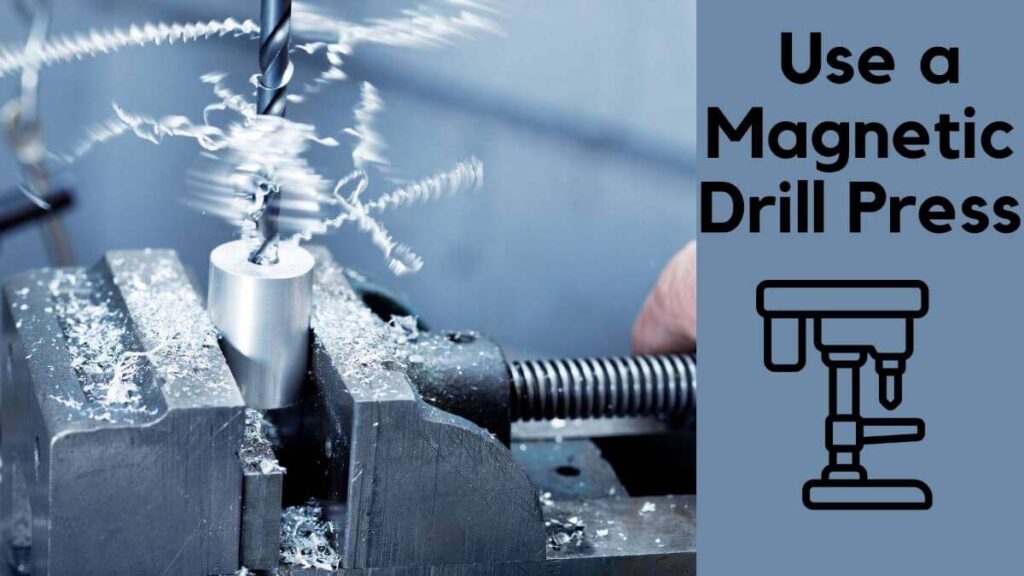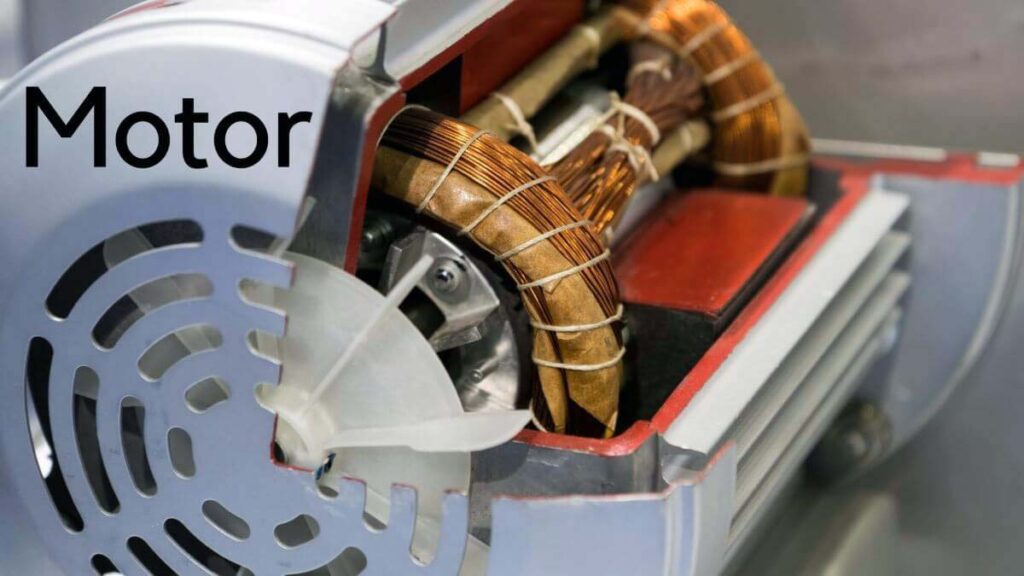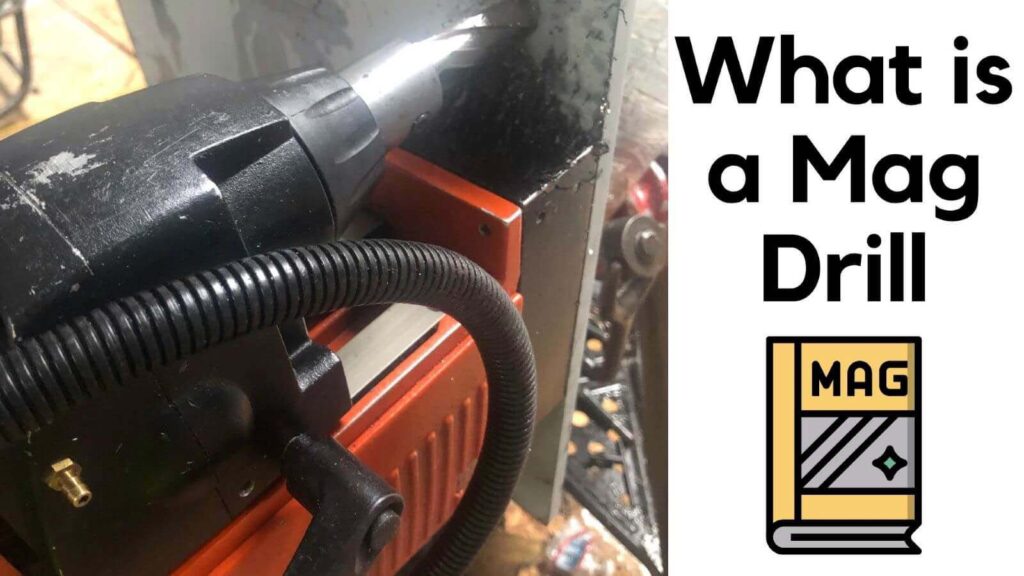When it comes to drilling operations in metalwork, construction, or fabrication, efficiency and precision are paramount. For these tasks, a magnetic drill press (commonly known as a mag drill) is an invaluable tool. Whether you’re working with steel beams, pipes, or other metal surfaces, the mag drill offers versatility, portability, and accuracy, making it a preferred choice for professionals. This blog will explore what a mag drill is, its applications, types, how to use it properly, and its design features.
Table of Contents
When Should I Make Use of a Mag Drill?

A mag drill is typically used when you need to drill large holes in metal surfaces, particularly steel. It becomes essential in scenarios where:
- Metal Thickness: You’re working with thick metal pieces where traditional drills struggle to penetrate.
- On-Site Drilling: When drilling on construction sites or in positions where larger drill presses are impractical.
- Tight Spaces: Mag drills are compact and can fit into spaces where a stationary drill press wouldn’t work.
- Precision is Needed: The magnetic base secures the drill firmly in place, ensuring accurate, stable drilling.
- Repetitive Work: If you need to drill multiple holes in the same material, a mag drill saves time by staying fixed in one place.
Whether you’re drilling overhead, vertically, or in any unconventional position, the mag drill ensures stability and efficiency, making it ideal for steel fabricators, bridge construction, shipbuilders, and metalworkers.
Why Should You Use a Magnetic Drill Press?

A magnetic drill press is a specialized tool designed to handle metal drilling tasks more efficiently than standard drills. Here’s why it stands out:
- Portability: Mag drills are relatively compact and easy to transport to job sites.
- Strong Holding Power: The magnetic base provides exceptional stability, even when working on vertical or overhead surfaces.
- Precision Drilling: Unlike handheld drills, mag drills allow for precise drilling because the magnetic base minimizes vibrations and movement.
- Time-Saving: Mag drills reduce setup time and increase productivity, especially when working on repetitive drilling tasks.
- Versatility: They can be used on different types of metalwork, including structural steel, pipelines, and heavy machinery.
Read More: How to Drill a Hole Bigger than Your Drill Bit?
The History of the Magnetic Drill Press
The magnetic drill press was introduced in the mid-20th century as industries evolved and demanded more efficient metalworking solutions. Before this, traditional drill presses were primarily used in stationary positions, limiting their portability and versatility.
With advances in magnetic technology, manufacturers integrated powerful electromagnets into drill bases, creating a tool that could adhere firmly to metal surfaces, providing greater control during drilling operations. Over time, mag drills evolved with innovations such as cordless options and more robust, lightweight designs. Today, they are indispensable in construction, manufacturing, and various industries requiring metal fabrication.
Read More: How Long Does it Take to Charge a Drill Battery?
Magnetic Drill Press Types:
Magnetic drills come in several types, each catering to specific needs. Here are the four primary types of mag drills:
1. Standard Mag Drill:
The standard mag drill is the most common type, designed for everyday use in metalworking tasks. It typically comes with an electric-powered motor and is ideal for general-purpose metal drilling. It offers sufficient power for most tasks and is versatile enough for various applications, from construction to shipbuilding.
2. Cordless Mag Drill:
As technology advances, cordless mag drills have become more popular. They run on rechargeable batteries, providing portability without being tethered to a power source. Cordless mag drills are excellent for remote job sites where electricity may not be readily available.
3. Pneumatic Mag Drill:
Pneumatic mag drills operate using compressed air. They are commonly used in environments where electric-powered tools could be hazardous, such as in explosive or flammable settings like oil refineries or gas plants. These drills are durable and reliable under extreme conditions.
4. Hydraulic Mag Drill:
Hydraulic mag drills are designed for heavy-duty industrial applications. They use hydraulic power to drive the drill motor, making them extremely powerful. They’re perfect for drilling through very thick or hard materials, and they’re commonly used in large-scale construction projects, shipyards, and other industries requiring heavy-duty machinery.
How to Use a Magnetic Drill Press?
Using a magnetic drill press may seem complicated at first, but following a step-by-step approach ensures efficiency and safety. Here’s how to use it properly:
- Preparation: Ensure the surface you are working on is clean and flat for maximum magnetic adhesion. A dirty or uneven surface will reduce the magnet’s strength.
- Positioning: Place the magnetic drill press on the surface where the hole will be drilled. Ensure the magnetic base is fully engaged and securely fastened to the material.
- Drill Bit Selection: Choose the appropriate drill bit or cutting tool for the task at hand, whether it’s an annular cutter or twist drill bit.
- Setting the Speed: Adjust the speed of the drill motor according to the material you’re drilling. Slower speeds are ideal for thicker or harder materials.
- Lubrication: Apply a cutting lubricant to the drill bit and surface to reduce friction and heat.
- Start Drilling: Begin drilling slowly, allowing the bit to gradually penetrate the material. Don’t apply excessive force; let the drill’s motor do the work.
- Safety: Always wear appropriate personal protective equipment (PPE), including safety goggles and gloves, and avoid loose clothing that could get caught in the machinery.
Check Also: 10 Cross Slide Drill Press Vise You’ll Love.
What is the Purpose of a Mag Drill?
The purpose of a mag drill is to provide a portable, reliable, and precise solution for drilling holes in metal. Its magnetic base ensures stability and accuracy, allowing it to be used in situations where traditional drill presses are impractical. They are widely used in industrial applications where large, repetitive holes need to be drilled in heavy materials, such as steel beams and metal frameworks.
Read More: How to Drill a Hole in Plastic Without a Drill?
Design of a Magnetic Drill Press
Understanding the design of a mag drill helps users appreciate its versatility and power. A magnetic drill press consists of several key components:
Base Magnetic
The magnetic base is the foundation of a mag drill. It features an electromagnet that adheres firmly to ferrous metal surfaces, providing the stability needed for precise drilling. Once activated, the magnet locks the drill in place, allowing users to work in various orientations, even upside down.
Read More: What is Drill Press Swing
Drilling Platform
The drilling platform is the surface area where the motor, drill bit, and other components are mounted. It is adjustable to allow for flexibility in drill depth and angle, depending on the material and type of hole required.
Motor

The motor powers the mag drill, driving the cutting tool with sufficient force to penetrate metal surfaces. Depending on the type of mag drill (electric, pneumatic, hydraulic, or cordless), the motor specifications may vary, but they are generally designed to provide high torque for heavy-duty operations.
Arbor
The arbor is the component that holds the drill bit or annular cutter in place. It connects the drill bit to the motor and ensures smooth operation during drilling.
Cutting Tools in Magnetic Drills
Magnetic drills can be fitted with various cutting tools depending on the task. Some common tools include:
Annular Cutters: These cutters are perfect for creating clean, burr-free holes quickly.
Twist Drill Bits: Ideal for general-purpose drilling in metal.
A Magnetic Drill Press With Core Cutting

Magnetic drill presses excel when it comes to core cutting, especially with annular cutters. Annular cutters are designed to remove the material’s core rather than drill through the entire surface. This method is faster and more efficient than using traditional twist drills, particularly when drilling larger holes.
ANNULAR CORE CUTTERS ICECUT™with Weldon Shank
Annular core cutters like the ICECUT™ with a Weldon shank are popular for use with mag drills. The Weldon shank is a robust, durable connection that prevents slipping during cutting. The ICECUT™ cutters are known for their precision and ability to cut through tough materials like steel, making them a reliable choice for industrial-grade tasks.
Conclusion
A magnetic drill press (mag drill) is a powerful tool essential for precise and efficient drilling operations in metalworking. Whether you’re working in construction, manufacturing, or fabrication, understanding the types of mag drills, their design, and how to use them properly ensures safety and optimal performance.
Whether you choose a standard, cordless, pneumatic, or hydraulic mag drill, the right tool, paired with proper technique, can significantly improve your productivity and ensure precision in metal drilling tasks. Always remember to prioritize safety and use appropriate cutting tools for the material you’re working with.

Hey, I am MD Hrithik Hossain, I’m a huge fan of DIY crafts. My workshop is where I spend most of my spare time, and I’m always working on some project. To that end, I’d like to share some of my knowledge and experience with you in power tools, woodworking, and other specialized materials fabrication.
I will guide you with genuine knowledge that can assist you with deciding whether a drill is appropriate according to your requirements or not. If you want to find the best drill and know which type of drill is most suited for your needs, then I can guide you with my expertise. My passion lies in helping others find the correct products they need at an affordable price.


